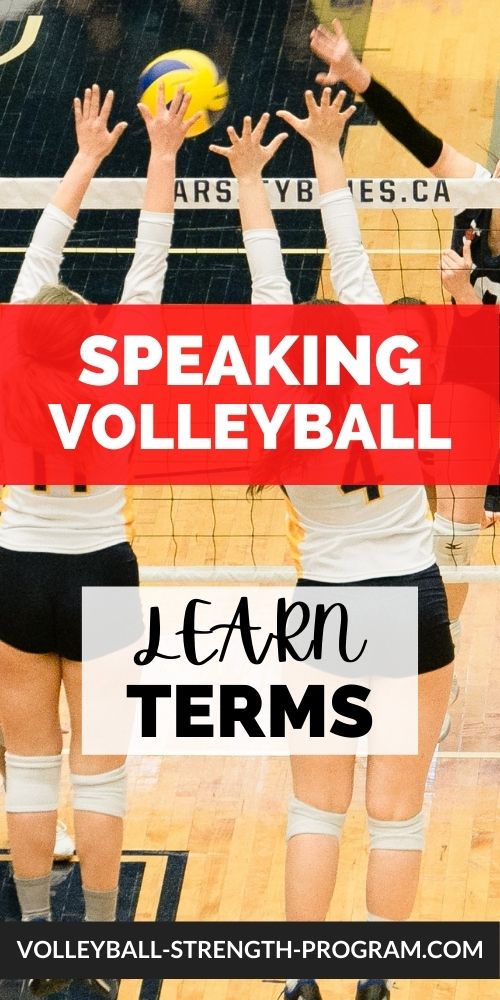Discover the volleyball terms for being successful at volleyball.
The following terms will help you understand how to play the game and get a better understanding of what is happening on the court.
Volleyball Terms for Team Practice
Volleyball Drills. Drills are basically exercises that a team does to become better at volleyball. Drills involve specific volleyball playing skills such as spiking, blocking, passing, setting, and serving. In order for a team to get good, a team needs to perform team drills that help the team play better together.
Team drills. Team drills focus on players learning volleyball skills within team drills.
Individual Drills. Individual drills have players focus on develop specific individual playing skills such as passing and setting. All players should spend time developing individual skills.
Target. A target is used in a team’s practice so the player’s have a target to focus on. The target is used in passing, setting and sometimes spiking and serving. Targets are great because the more precise a player can be when trying to make the play, the easier it actually is to make the play.
For example, if you have a server that has trouble serving the ball in the court, start by placing a target in the middle of the court. What’s key here is to have the server aim the ball at the target. With practice, you will find targets help players become more accurate and consistent. Targets are also used for setting (setter targets) and passing (passer targets). If you want the setter to become more consistent setting the ball, have the setter set to a target. If you want the passer to be more consistent passing, pass to a target.
If you enjoyed these tips and would like to keep it close to you at any time, just save this pin to your Pinterest Volleyball Training Board.

Volleyball Terms for Playing Skills
Spiking. Spiking is the act of hitting the ball with hand with the intention of the ball going over the net and landing on the opponents side. Not all spikes are successful. Spiking is one of the toughest skills in volleyball to learn. To be good at spiking, one must develop a good spike approach.
Spike approach. The volleyball spike approach consists of taking steps to the ball to get in position to spike. There are specific techniques for approach to spike. There is specific footwork for approaching. Also, approaching to spike a quick set is similar but different than approaching to spike a high slow set. A big part of being successful spiking is being able to anticipate the set.
Anticipation. The best players have developed great anticipation skills. Anticipation is the skill of being able to predict what is going to happen. For example, if a spiker can consistently get into the correct position to spike, then you could say they have developed good anticipation for spiking. The most obvious example of anticipation is a defensive player that can dig every ball on defense. A defensive player that is always in the right spot is a defense player that has developed good anticipation skills.
Passing. Passing is the skill of sending the ball to a team. Passing a volleyball is a very difficult skill. No other sport require athletes to deflect a ball off the forearms to a teammate.
Serving. Serving is the skill of hitting the ball over the net to start the volley. Serving is usually the easier of the skills because it is the only skill where the player can toss the ball. Basically, the server has a lot more control over executing the serve. Whereas with other skills such as passing, the passer must play the ball that comes from a teammate or opponent.
Blocking. Blocking is the action of deflecting the ball coming from the opponent. The goal with blocking is to prevent the ball from coming over the net.
Volleyball › Volleyball Terms › Volleyball Terms
